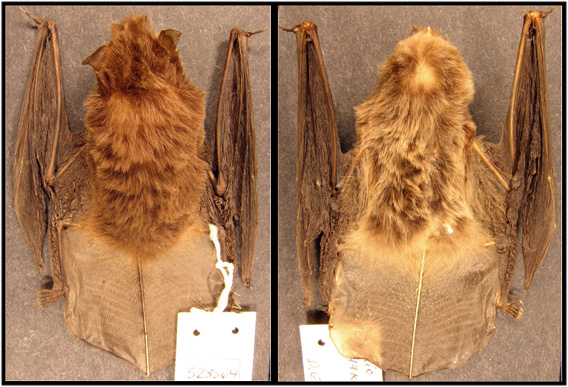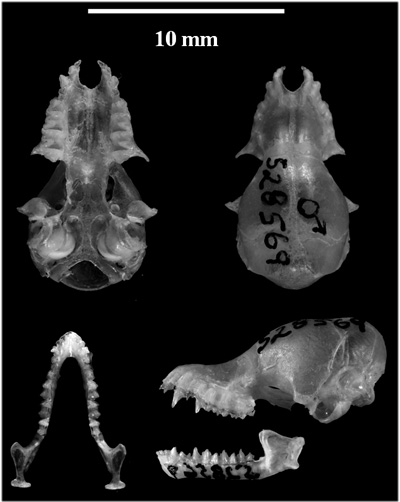Although the first specimen was collected over 30 years ago, scientists have only now confirmed that a tiny brown bat is indeed a unique species. Named Myotis diminutus for its incredibly small size, the new bat was discovered in the Chocó biodiversity hotspot, amid the moist forests of western Ecuador.
“There are more than one hundred species of Myotis, twelve of which in South America and six in Ecuador. Myotis diminutus is the seventh Ecuadorian species, and the smallest of this group yet known in South America, weighing 3.5 grams,” lead author of the paper describing the new species, Ricardo Moratelli, told mongabay.com.
The bat is likely gravely endangered according to Moratelli and may already be extinct, since the finding is based on a decades-old specimen.
“Until new specimens of this insectivorous bat are caught, we will do not know whether the species is still living in nature. Only by inventory [of the forest will we] discover if the species still survives. […] If field works confirm the species only [survives in] the moist forests of western Ecuador, it will probably be one of the most endangered South American species of bat.”
The bat was found at the Río Palenque Scientific Center (RPSC), a private conservation reserve on the western slope of the Andes, where much of the forest in the region has been lost to agriculture.
“The moist forests of western Ecuador at one time covered a large part of the Pacific Coastal area, blanketing the coastal plain and extending up the relatively steep slopes of the western side of the Andes. These forests undoubtedly harbored an enormous wealth and diversity of species, but exist today as a disrupted series of tiny fragments under continuing threat and facing an uncertain future,” explains Moratelli.

Myotis diminutus specimens that confirmed it is a new species. Photo courtesy of: Ricardo Moratelli.

Skulls of the Myotis diminutus. Photo courtesy of: Ricardo Moratelli.
Related articles
World’s largest bat threatened with extinction due to legal hunting

(08/25/2009) Under the current legal hunting rate scientists predict that the world’s largest bat, the aptly-named large flying fox or Pteropus vampyrus, faces extinction in six to 81 years. Increasing the urgency to save the large flying fox is the vital role it plays as an ecosystem engineer (a species whose behavior can shape an ecosystem); the species maintains Southeast Asian forests by dispersing a wide variety of seeds over distances farther than most birds and other mammals.
Tiny bat discovered on islands off Africa
(06/25/2009) The Natural History Museum in Geneva, Switzerland has announced the discovery of a bat species new to science on the Comoros Island arichpelago off the south-east coast of Africa. The bat weighs only 5 grams (0.17 ounces).
Extinction of Christmas Island Pipistrelle bat predicted in less than six months
(06/03/2009) The Australasian Bat Society predicts that the Christmas Island Pipistrelle bat has less than six months left until extinction, unless measures are taken immediately to set-up a captive breeding population.